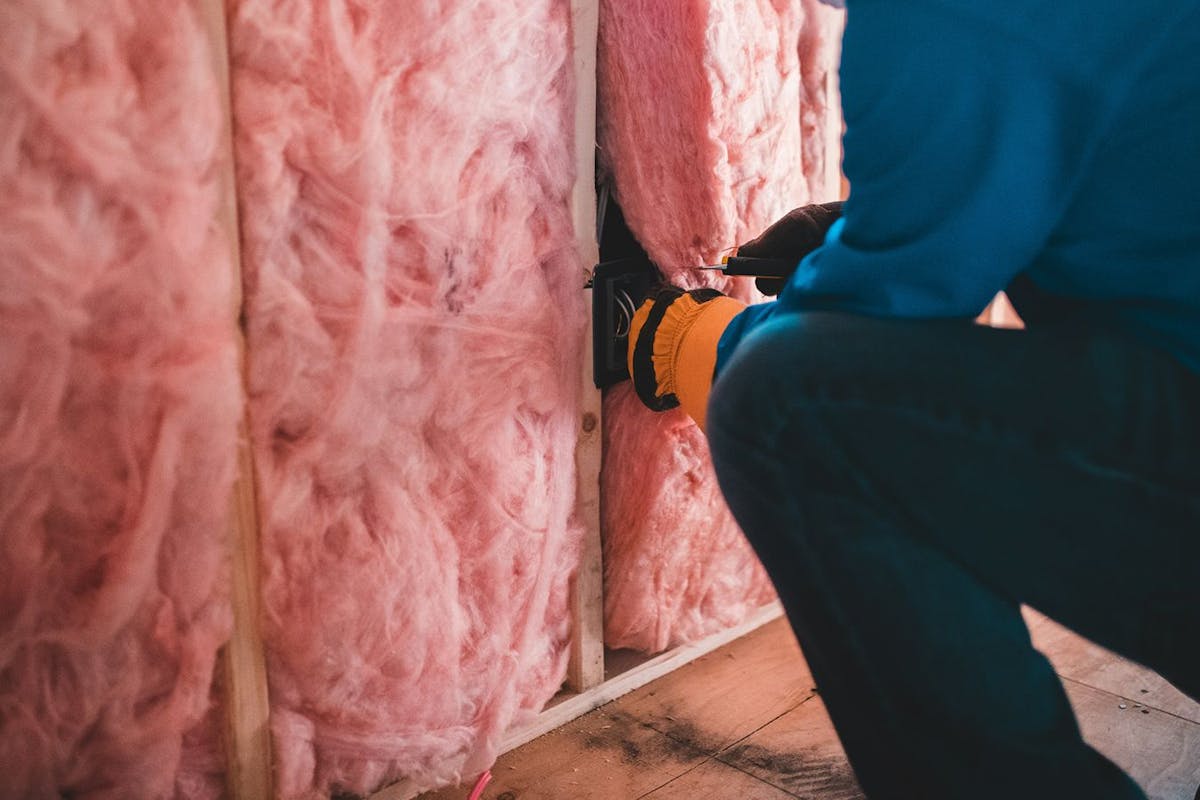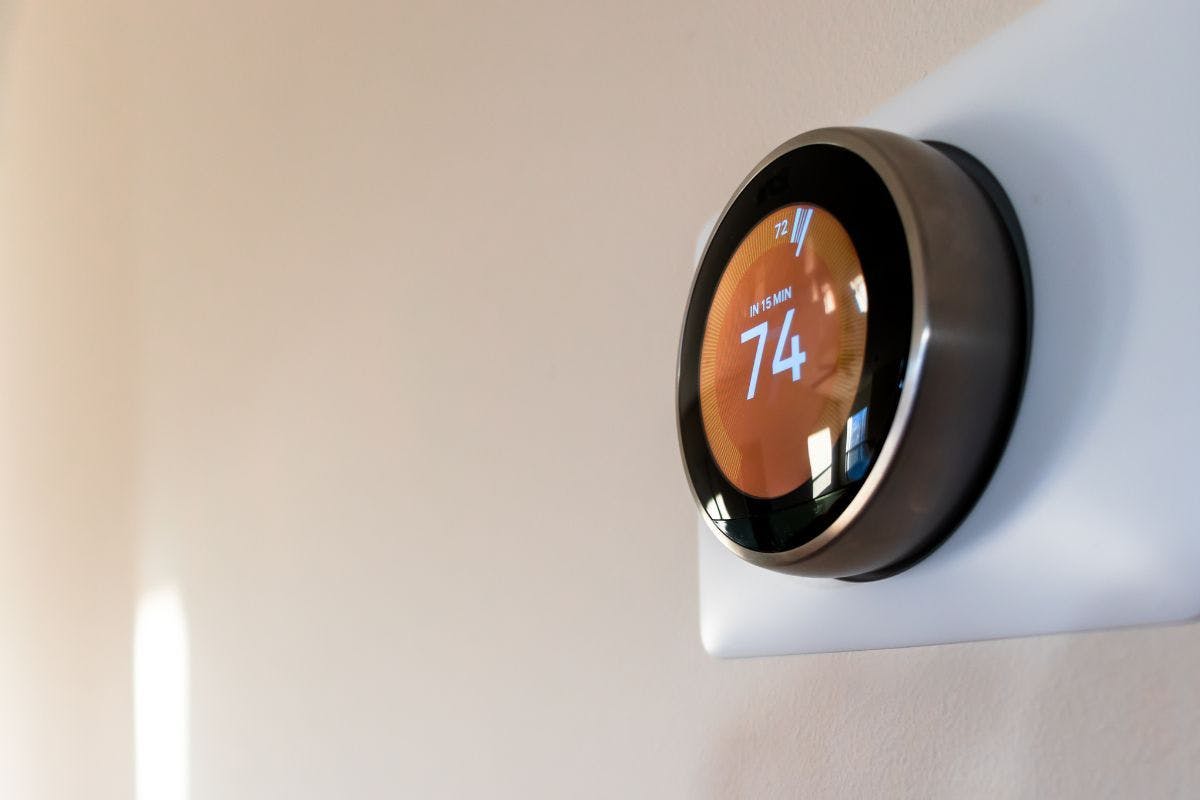What Is R-Value For Home Insulation?
Last edited

Author
Andrew Giermak
Solar and Electrification Writer and Editor

Editor
Andrew Blok
Electrification and Solar Writer and Editor

You might not think much about your home’s insulation, but it’s one of the best tools for spending less money, using less energy, and having a more comfortable and healthier home environment.
Having insulation in your attic, walls, and crawl space of an appropriate R-value is one important factor in having an energy-efficient home. The right insulation can improve life in your home in multiple ways.
See how much you can save with home energy changes
What Is R-Value?
Insulation R-value is a measurement of the insulation’s resistance to heat either gain or loss. R-value tells you how effective a material is at insulating your home. The higher the R-value, the better the floor, wall, or attic insulation stops heat moving into your home when it’s warmer outside and out of your home when it’s warmer inside. The R-value you need depends on your climate zone and the area of the home you're insulating.
The R-value scale is R13-R21 for wall insulation, R13-R30 for floor insulation, and R38-R60 for attic insulation. Different materials or types of insulation have different R-values per inch of thickness. You can install insulation with a higher R-value or use more of a lower R-value insulation to get the same results. For example, two layers of R-19 insulation would provide a total R-value of R-38.
See how much you can save with home energy changes
R-Value By Insulation Type and Location
The R-value, generally given per inch of insulation, is an important factor in getting the right insulation type for the job. Here are the R-values, general uses, and benefits of common insulation types for residential uses.
| Insulation type | R-value per inch | Usual usage |
|---|---|---|
| Fiberglass batts, rolls | 2.9-3.8 | Standard walls, attics, and floors with joists or studs. |
| Loose-fill blown-in cellulose | 3.1-3.8 | Attics, walls, and hard-to-reach or odd-shaped spaces. |
| Rigid foam boards | 3.8-6.5 | For exterior walls, basements, specialized ceilings. Provides a thermal barrier and can be used on the inside and outside of walls. |
| Open-cell spray foam | 3.5-3.8 | For filling walls, ceilings, and attics. It seals air leaks and provides soundproofing. |
| Closed-cell spray foam | 6.0-7.0 | For crawl spaces, basements, and metal buildings where a moisture barrier and high R-value are needed. |
What Is the Right R-value for My Climate Zone?
The most efficient, and cost-efficient, insulation for your home should match the recommended R-value for your climate zone. There are eight climate zones in the US, along with Moist (A), Dry (B), and Marine (C) regions, for insulation according to Energy Star. The amount of insulation needed, and thus the total recommended R-value, is higher in colder climates (zones 4-8) and lower in warmer climates (zones 1-3).
For instance, Houston, Texas and Jacksonville, Florida are in Zone 2A. Denver, Colorado and Santa Fe, New Mexico are in Zone 5B. Portland, Oregon and Seattle, Washington are in Zone 4C. Portland, Maine and Green Bay, Wisconsin are in Zone 6A.
The correct R-value for your home, by climate zone, also depends on the space you’re working on.
| Climate Zone | Attic (uninsulated) | Attic (with 3-4" existing insulation) | Floor |
|---|---|---|---|
| 1 | R30 | R25 | R13 |
| 2 | R49 | R38 | R13 |
| 3 | R49 | R38 | R19 |
| 4A, 4B | R60 | R49 | R19 |
| 4C, 5, 6 | R60 | R49 | R30 |
| 7, 8 | R60 | R49 | R38 |
Source: Energy Star
You may think, can I just cut to the chase and use a higher R-value no matter what? This isn’t recommended because using too high an R-value for your climate or need means you’re spending more money in relation to the energy savings you’ll get. Insulation with too high an R-value can also lead to moisture problems causing issues such as mold, rot, and high humidity.
Inadequate insulation leads to higher heating and cooling bills, more strain on your HVAC system (and possibly a shorter lifespan for your HVAC), uneven temperature areas in your home, and moisture and air quality problems.

Credit: Energy Star
The Benefits of the Right Insulation
Insulation with the right R-value for your climate offers a number of important benefits for your home and budget. The Department of Energy estimates proper insulation gives a home an average of 15% savings on heating and cooling costs. The right insulation also provides comfort by maintaining a consistent indoor temperature year-around. It contributes to better indoor air quality and a healthier environment in your home.
If you’re looking into ways to save money and energy in your home, see if a heat pump will work for your home or explore the impact of other energy upgrades with Palmetto’s Savings Maximizer.
See what home electrification can do for you:
Frequently Asked Questions
Can insulation with the right R-value save me money?
Insulation with the right R-value saves you money mainly because it increases the efficiency of your heating and cooling. The right type, condition, and R-value for my climate zone means your HVAC system will run less and with better efficiency.
Should I just get the highest R-value possible?
In most cases, in most climates, no. Getting insulation with too high an R-value means you’re spending more and will not see offsetting savings in efficiency and energy bills.
How do I know if my home has enough insulation?
Higher utility bills or uneven temperatures around your house may be hints about your home’s insulation. In an attic, in most homes and most climates, a general recommended depth is 13-22 inches of insulation. You can also hire a professional to be exact with precise equipment and do a full home energy audit.
What is the R-value of spray foam insulation?
Open-cell spray foam insulation has an R-value of about 3.5-3.8. Closed-cell spray foam’s R-value is about 6.0-7.0.


